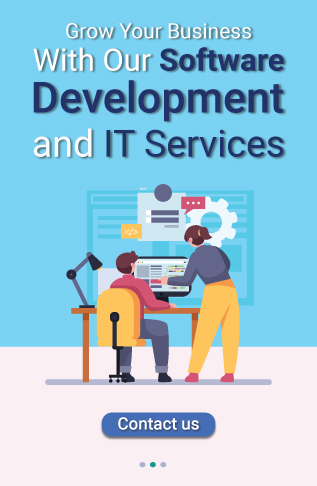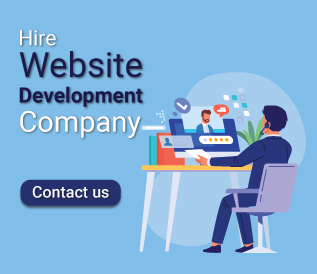Did you know? The global eCommerce market is expected to hit $6.8 trillion in 2025. That is a crazy number. It shows how fast eCommerce website development is growing and how crucial it has become for businesses of all sizes.
From startups or large enterprises, they focus on shifting towards eCommerce. To build their strong online presence and cater to customers worldwide.
A successful eCommerce website requires careful planning and key features. Therefore, businesses must first understand these core elements.
However, building an eCommerce website involves several factors and complications. Do not worry!
This guide covers eCommerce website development, including its benefits, key features, and a list of 11 essential things to build a successful eCommerce website with its estimated cost.
Table of Contents
ToggleWhat is E-commerce Website Development?
E-commerce website development is the process of building an online store. It allows businesses to sell products or services. This process involves designing the website interface, setting up essential features, and ensuring smooth backend operations so customers can visit a store, explore products or services, and make purchases without hassle. That is what a good eCommerce website looks like.
Key Parts of E-commerce Website Development
- Frontend Development: It includes website design, product pages and shopping cart.
- Backend Development: This manages data and processes orders. It ensures the website runs smoothly behind the scenes.
- Integrations: Connecting the website to other tools. It includes payment gateways, shipping services, and analytics.
Benefits of E-commerce Website Development

Here are some benefits of building an eCommerce website:
Global Reach
An online store allows businesses to reach customers worldwide, while a traditional store serves only a local audience. An eCommerce website allows you to sell products internationally, breaking geographical barriers and increasing your customer reach.
24/7 Accessibility
An online store never closes. Customers can shop anytime, which gives them the necessary convenience and increases sales without extending store hours.
Cost-Effective
Running an online business is more cost-friendly than a physical store. You save money on rent, electricity, and staffing. Plus, automation tools can reduce overall business expenses.
Data-Driven Decisions
eCommerce platforms track customer behavior. This information allows them to create personalized offers via data analysis.
Mobile-Friendly
Most people prefer online shopping via smartphones. An eCommerce website should adapt to different screen sizes. This ensures a smooth shopping experience on mobile devices, helping businesses attract more customers and increase conversions.
Scalability
A physical store costs a lot of money for scaling. But you can quickly scale with an eCommerce website. Whether you want to add more products, reach more customers, or grow your business. You can do it without needing a bigger space.
Enhance Growth
An online store helps people remember your brand. You can offer special discounts, personalized recommendations, and excellent customer service.
11 Essentials to Launch Your Successful E-commerce Website

Here is the complete checklist for your custom eCommerce development:
E-commerce Platform Selection
Choosing the right platform is crucial. You can build your website from scratch or use a platform. Some popular platforms include Shopify, WooCommerce, and Magento.
Domain and Hosting
A domain name is your website’s address. You can choose an easy name related to your business. Hosting is the service that makes your website online. Popular hosting providers include Bluehost, HostGator, and SiteGround.
Website UI/UX Design
Your website should look good and be easy to use. A friendly site keeps visitors engaged and helps them find products quickly. Focus on:
- A simple layout that highlights your products
- Fast loading speed so customers do not leave
- Easy navigation so visitors can browse smoothly
Add Core Pages
Your website should have essential pages that provide information and build trust. These include:
- Home Page – First impression of your store
- About Us – Information about your business
- Contact Page – Ways for customers to reach you
- Product Pages – Detailed descriptions, images, and pricing
- Terms & Policies – Shipping, return, and privacy policies
Security Measures
Security Measures protect your eCommerce site from hackers and fraud. Get an SSL certificate to secure data, and use payment gateways like PayPal. Enable two-factor authentication (2FA) for extra security. Keep your website updated to prevent threats, and follow PCI compliance for safe payments.
CMS & Payment Gateway Integration
A Content Management System helps you manage and update website content. Most eCommerce platforms come with a built-in CMS. A payment gateway allows customers to pay securely. Make sure to offer multiple options so that customers can pay using their suitable mode.
Streamline the Checkout Experience
Make the checkout experience quick and hassle-free. You can offer guest checkout to avoid forced sign-ups, keep forms short, and provide multiple payment options like credit cards, PayPal, and digital wallets. Show a transparent progress bar so that customers know how many steps are left. Enable auto-fill for faster entry. This ensures a mobile-friendly design for smooth checkout on all devices.
Optimize for SEO
Make your website easy to find on search engines like Google. Use relevant keywords in product descriptions and meta titles. Optimize images and page speed for better performance. A well-optimized site brings in more traffic and increases sales.
Mobile-friendly Design
Ensure your website works smoothly on smartphones. Pages should auto-adjust to different screen sizes. Keep buttons and text easy to tap and read. A mobile-responsive site improves user experience and boosts sales.
Set up Inventory Management & Analytics Tools
Keep track of your stock to avoid running out of products or overstocking. Inventory management software is used to automate stock updates and alerts. Use Google Analytics or similar tools to monitor visitor behavior, sales trends, and customer preferences. This helps you make smarter business decisions and improve customer satisfaction.
Website Maintenance and Support
Regularly check your website for bugs, broken links, and outdated content. It will keep your website running smoothly. Provide 24/7 customer support via live chat, email or phone.
Key Features of Successful E-commerce Websites
Here are some essential features of an eCommerce website:
User-Friendly Interface
A website should be simple and easy to navigate. Customers should find products quickly, without any unnecessary clicks. A clean layout and advanced search bar help visitors browse comfortably.
Responsive Design
People shop from different devices, including smartphones and laptops. A responsive website automatically adjusts to fit any screen size, making it easy for customers to browse and buy products.
High-Quality Product Images & Videos
Since customers cannot touch or try products online, you should use clear images and videos. Photos should show the product from different angles, and videos can provide demonstrations, helping customers understand the product better.
Multiple Payment Options
Not all customers prefer the same payment method. A good eCommerce site should support credit and debit cards, digital wallets, and even Buy Now, Pay Later services. Offering more payment options makes checkout convenient for everyone.
Seamless Checkout
A complicated checkout can cause customers to leave without making a purchase. The checkout should be simple and quick. Features like guest checkout, auto-filled address, and clear price breakdowns help complete the purchase smoothly.
Personalized Recommendations
Personalized shopping improves customers’ experiences. The website can suggest related or frequently bought-together products. They analyze past purchases and browsing history.
Excellent Customer Support
Customers may have questions about products, shipping, or payments. A good eCommerce website offers multiple support options, including live chat, email, and phone support.
Customer Reviews & Ratings
Customers read reviews before making a purchase, which allows new customers to make informed decisions. Positive reviews build trust, and feedback helps businesses improve their products.
Advance Search Filters
An intense search function saves customers time. Advanced filters let them narrow down options, and they can search based on categories. This feature is suitable for websites with a large number of products.
How Many Ways to Build an E-commerce Website?
Here are three main ways you can create your online store:
- Building from Scratch (Open Source)
- Using a SaaS (Software-as-a-Service) Platform
- Using MACH Architecture
Let us break down each option in detail!
1. Building from Scratch (Open Source)
If you have a skilled eCommerce development services team, you can build a website from scratch. This allows full customization, which means you can design your store exactly how you want it.
Pros:
- Complete control over your website’s design and features
- Ability to add unique functions that pre-built platforms may not offer
- There are no restrictions on how you develop your online store
Cons:
- You must manage everything, including hosting, security, and updates
- Requires technical expertise and a big budget for eCommerce website development guide
- Time-consuming compared to ready-made solutions
2. Using a SaaS Platform
A SaaS solution is convenient if you do not have a development team. Platforms like Wix, Shopify, or BigCommerce let you rent a fully functional eCommerce store with built-in features.
Pros:
- No need to worry about hosting, security, or updates
- Quick and easy to set up, making it perfect for beginners
- Lower upfront cost compared to building a custom site
Cons:
- Limited customization compared to open-source solutions
- Monthly subscription fees
- You rely on the platform provider for updates and new features
3. Using MACH Architecture
MACH (Microservices, API-first, Cloud-native, and Headless) is a modern, flexible approach to building eCommerce websites. It is ideal for businesses that want advanced customization and scalability.
Pros:
- Maximum flexibility and customization
- It is more straightforward to scale as your business grows
- Can integrate multiple technologies seamlessly
Cons:
- Requires technical expertise to set up
- More expensive than SaaS platforms
- It can be complex to manage
How Much Does It Cost to Build an E-commerce Website?
The average cost of building an eCommerce website can range between $5,000 and $100,000. However, the actual cost varies based on several factors, including the site’s complexity, the features needed, and the developer’s location.
Conclusion
Building an eCommerce website involves several factors. So, whether you are a startup or a large enterprise, you must know the essential steps before building an eCommerce website. We hope this guide helps you understand eCommerce website development and its benefits, as well as a complete eCommerce website development checklist to consider while creating an eCommerce website. Now, it is your turn to follow the steps and hire an experienced website development company for expert consultation.
FAQs
Q1. How can I choose the right platform for my eCommerce website?
Choose a platform based on your business size and needs. Shopify and WooCommerce are great for small stores, and Magento is ideal for large enterprises.
Q2. What are the must-have features for an eCommerce website in 2025?
Some essential features are quick checkout, multiple payment options, AI-driven recommendations, advanced search, live chat, and SEO optimization.
Q3. What security measures are essential for an eCommerce website?
Essential security measures include SSL certificates and two-factor authentication. You should also consider fraud detection tools, regular updates, and firewalls to keep your site secure.
Q4. How long does it take to build an eCommerce website?
A basic eCommerce site can be set up in a few weeks, but a more complex one may take several months. It completely depends on the website’s complexity.























